The archaeological site of Tambomachay was a place dedicated to the water worship and as a resting place for the Inca nobility. Today, this archaeological site continues to impress all visitors with its complex hydraulic engineering.
The location has an approximate extension of half a hectare and the material used for its construction was limestone with polygonal style masonry. Tradition knows this monument as "The Bath of the Ñusta" due to the existence of two aqueducts that carry crystal clear water all year round.
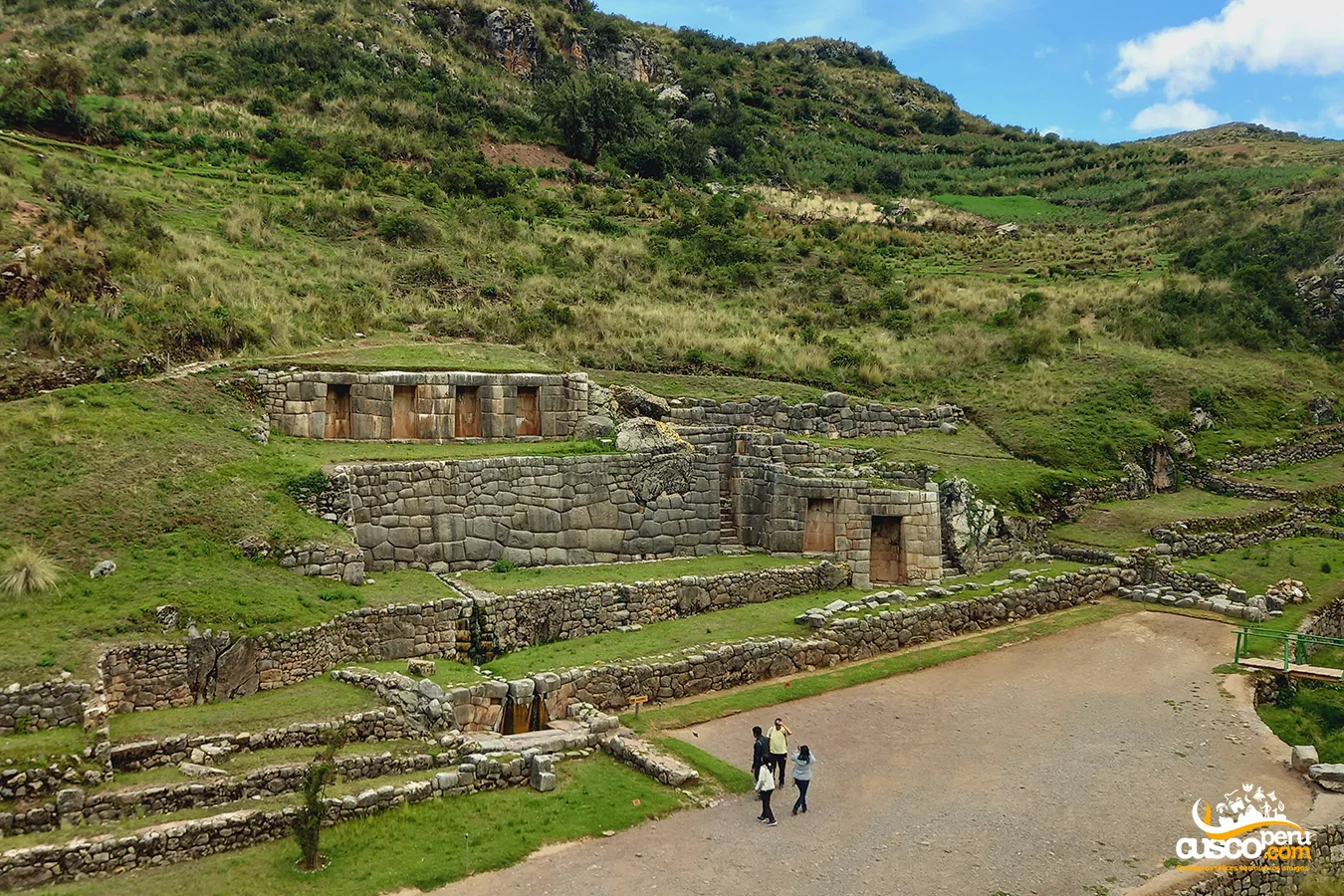
The name it receives does not have an exact definition, but it is believed to come from two Quechua words: "Tampu" which means lodging and "Mach'ay" which is rest. However, other translations indicate that "Mach'ay" means caves.
In the Andean worldview, water was the origin of life, turning this resource into one of their main deities. For this reason, special importance was given to water worship in all Inca constructions.
Tambomachay has liturgical fountains carved in stone and feed an extensive network of channels that provided water to the nearby archaeological enclosures.
Water worship is present in every Inca enclosure, represented as water channels in which the flow of it is continuous.
This archaeological center was built over a river and springs, although it is still not exactly known where the flowing water comes from. The slope allows water to run through all the channels, which despite having passed more than 600 years, continue to flow.
There is no doubt that all archaeological sites offer a different view of the Inca culture, in this case, Tambomachay shows us the importance that water had in the Inca era.
Tambomachay was not greatly damaged in the era of Spanish colonization, that is why the complex is one of the best preserved, located near the city of Cusco.
Tambomachay is an important example of the hydraulic engineering that the Incas possessed, since the precinct has water channels made of carved stone in which water flows all year round.
This water flows to a platform that functioned as a liturgical fountain and, presumably, the Inca baths.
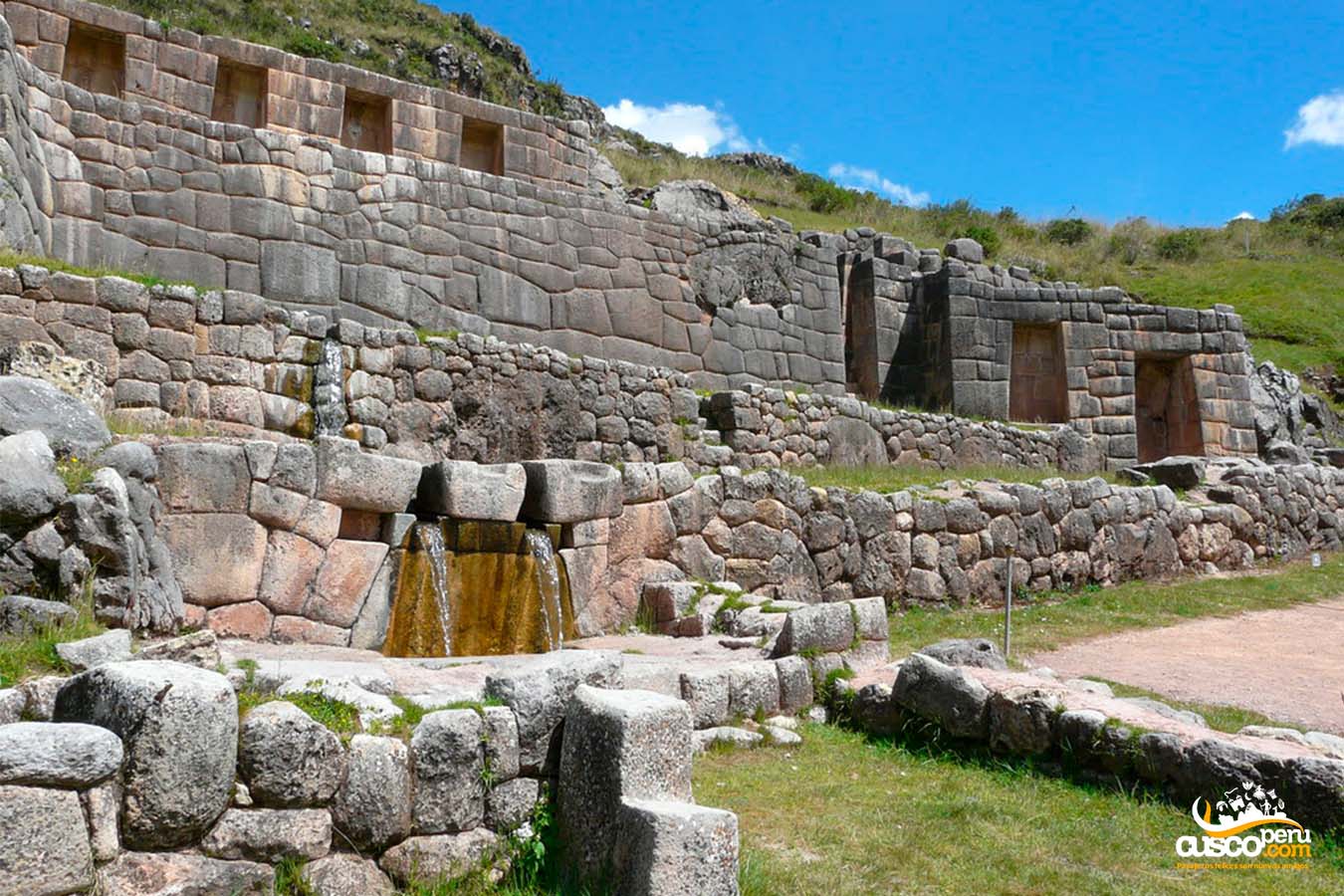
Tambomachay is located 5 kilometers from the city of Cusco and 0.6 kilometers from Puca Pucara, an archaeological site with which it is closely related. It is on the Cusco-Pisac road.
Monday to Sunday from 08:00 am to 05:30 pm.
Entrance to Tambomachay is included in the Tourist Ticket.
The climate at Tambomachay corresponds to the climate of the city of Cusco, which is generally dry and temperate. However, it is recommended to visit this place in the afternoons, when the temperature is not so high, and you can appreciate why it is named so.
Getting to Tambomachay is very simple, and it offers different options:
Image Gallery
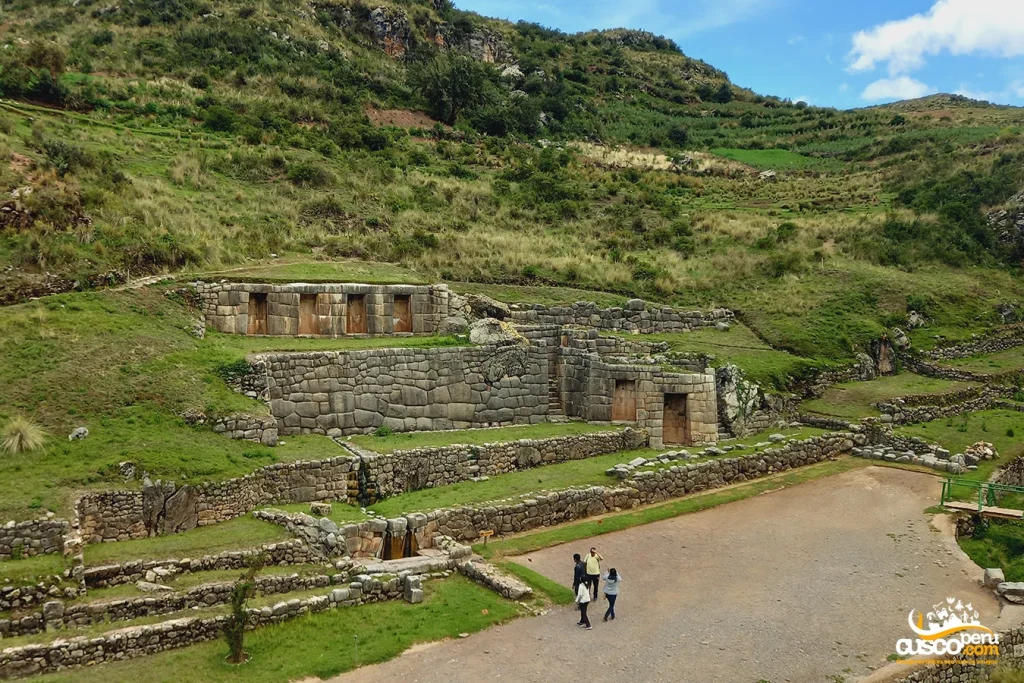
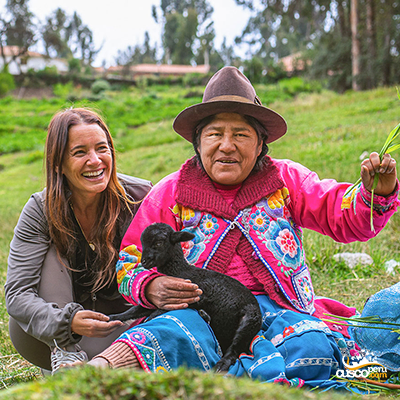
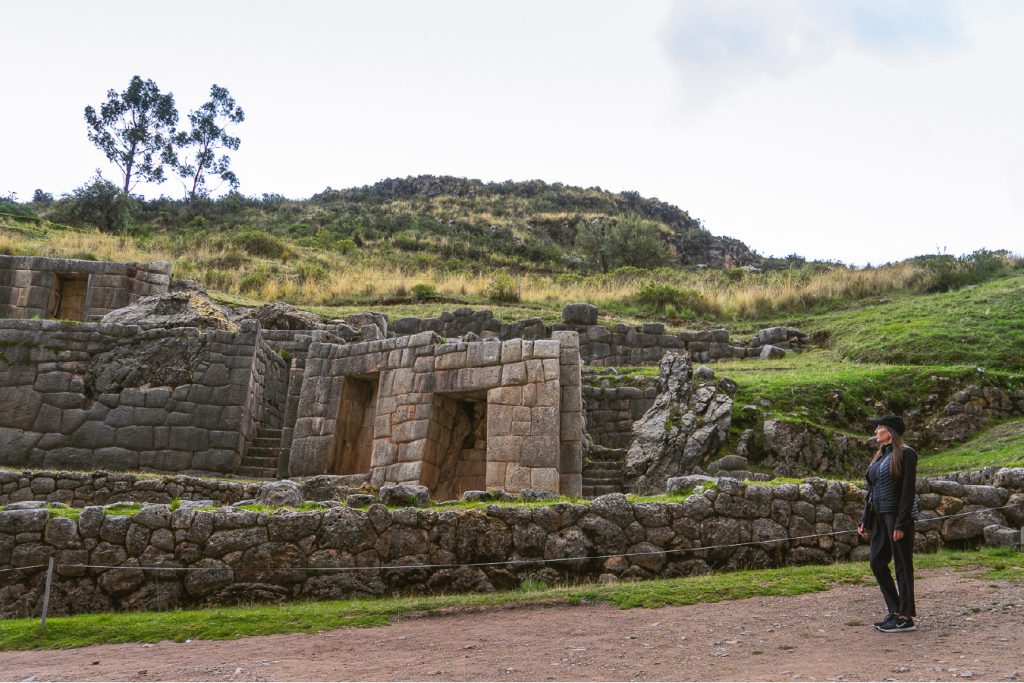
Undoubtedly, Sacsayhuamán was and remains to this day a majestic work of Inca architecture and engineering. The Inca fortress was built between the 14th and 15th centuries. All its structures were placed in such a way that they became an integral part of the landscape in which they stand, deeply and harmoniously integrating the then sacred category of the landscape, resulting in a colossal altar to nature.
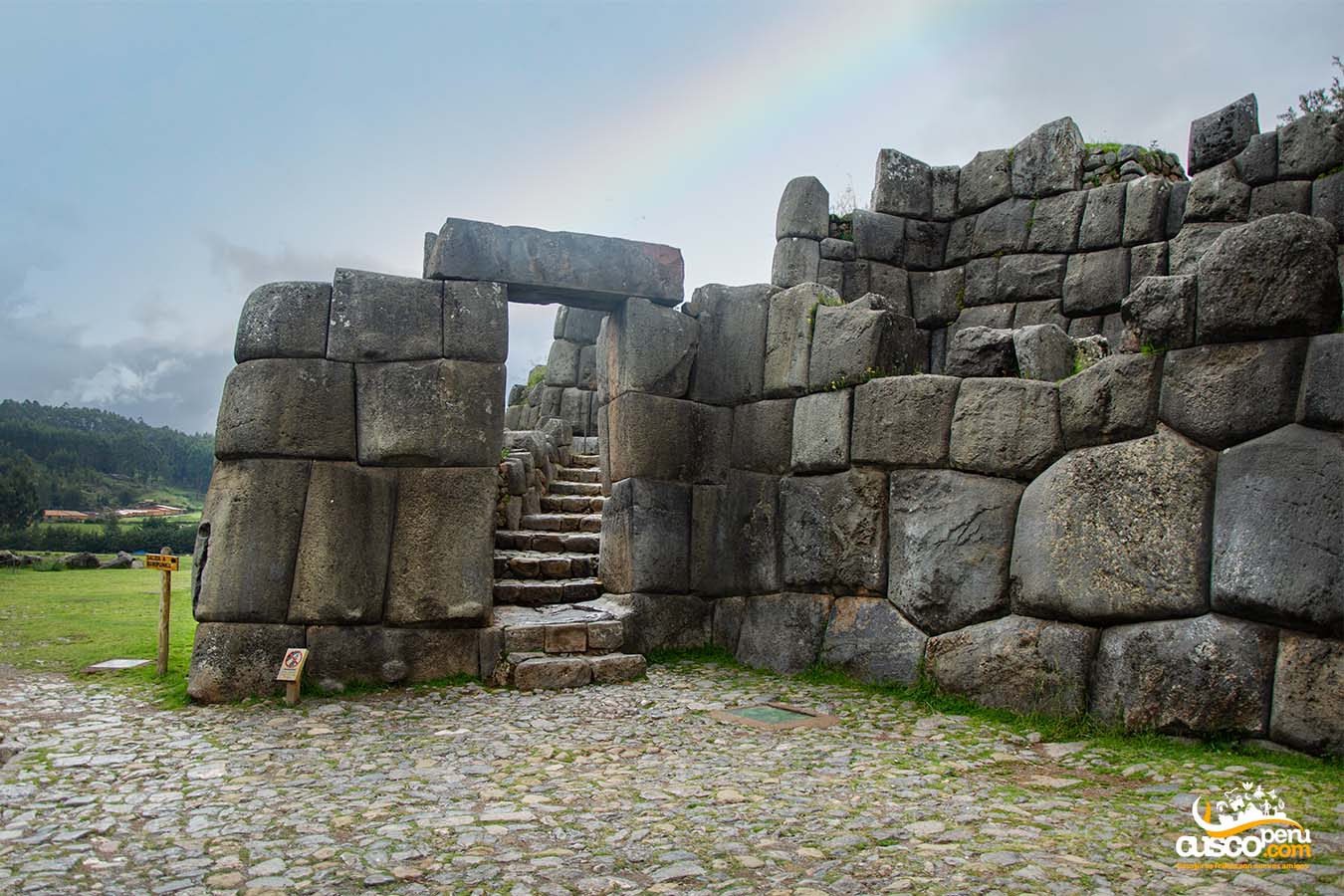
Before the arrival of the Incas, the area now occupied by Sacsayhuamán was territory of the Ayamarca culture. The Inca fortress of Sacsayhuamán was initially built by Inca Pachacútec around the year 1350 AD, but was completed by his grandson, Inca Huayna Cápac.
It is believed that its construction lasted more than 90 years, and for the construction of this impressive and imposing place, more than 20,000 men were needed under the mita system (teamwork), making this place the greatest evidence of the organization and technique of the Inca empire.
With the Spanish invasion, Sacsayhuaman became a battlefield, being key for the Inca resistance. After the battles, this place was dismantled, and its stones were moved to build buildings, such as the Cathedral of Cusco.
Over time, Sacsayhuaman lost its importance until it was abandoned and even used as a quarry for the construction of houses for the inhabitants. It was not until 1983 that it was declared a Cultural Heritage of the Nation.
In 1944, the reenactment of the Inti Raymi was celebrated for the first time on the central esplanade, which continues to be held year after year in the same place.
The word Sacsayhuamán comes from the Quechua words Sacsay "Satisfied" and huamán "Hawk," which translates to "The Satisfied Hawk" in Spanish.
In the time of the Incas, Sacsayhuamán was one of the most important ceremonial centers of the time, as it had a very close connection with the city of Cusco, located just 4 km from the city. It is also believed that Sacsayhuamán was the main water channel that supplied the entire city of Cusco.
The religious significance of this place was of great meaning, as it was here where the Inti Raymi (Festival of the Sun) took place, a ceremony that was held every winter solstice, in which offerings and sacrifices were made in honor of the sun god.
The Incas used astronomy to develop their calendar, as well as to know when the dry or rainy season began and to determine the start date of the harvest. The observation of the sun's position also determined the beginning of a solstice and equinox.
Sacsayhuamán is an archaeological site located to the north of the main square of the city of Cusco. You can reach Sacsayhuamán by taking a City Tour from any travel agency. You can also get there by walking, taxi, or using your own vehicle.
To walk to Sacsayhuamán from the main square, you can go up Suecia street to Huaynapata and continue on Resbalosa, turn right after the church of San Cristóbal and follow the road. Here, you will join the ancient Inca route to Sacsayhuaman. The climb is steep and takes about 30 minutes from the main square.
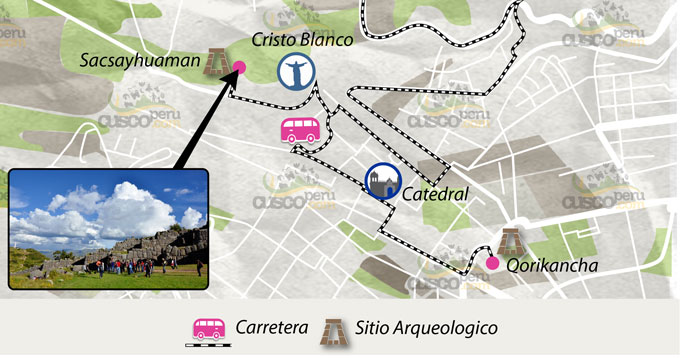
The general climate of the city of Cusco is very versatile, having two main seasons: dry and rainy. However, given the altitude at which Sacsayhuamán is located (3,700 m above sea level), it tends to have a cold climate, also depending on the month you wish to visit this incredible place.
December, January, February, March: These are the rainiest months of the year in the city of Cusco and Sacsayhuamán.
May, June, July, August: Being the driest.
Sacsayhuamán stands out for its incredible infrastructure, composed of towers, residences, warehouses, aqueduct, and more.
In this place, one can easily recognize all the Inca engineering; the transfer of stones was done using ropes pulled by men to the place where they were carved, obtaining a velvety texture, in addition to designing figures in the stones, entrances to tunnels, and buildings of a ritual nature.
The Inca fortress is divided into sectors: Sacsayhuaman, Rodadero, Inca Throne, Warmi K’ajchana, Inca Bath, Amphitheaters, Chincana, Tower Bases, and more.
Sacsayhuamán was originally built with a religious purpose, in honor of the God Illapa "the god of thunder" among other deities worshiped by the Incas. However, after the arrival of the Spaniards, it became a battlefield, being referred to by the Spaniards as a "fortress."
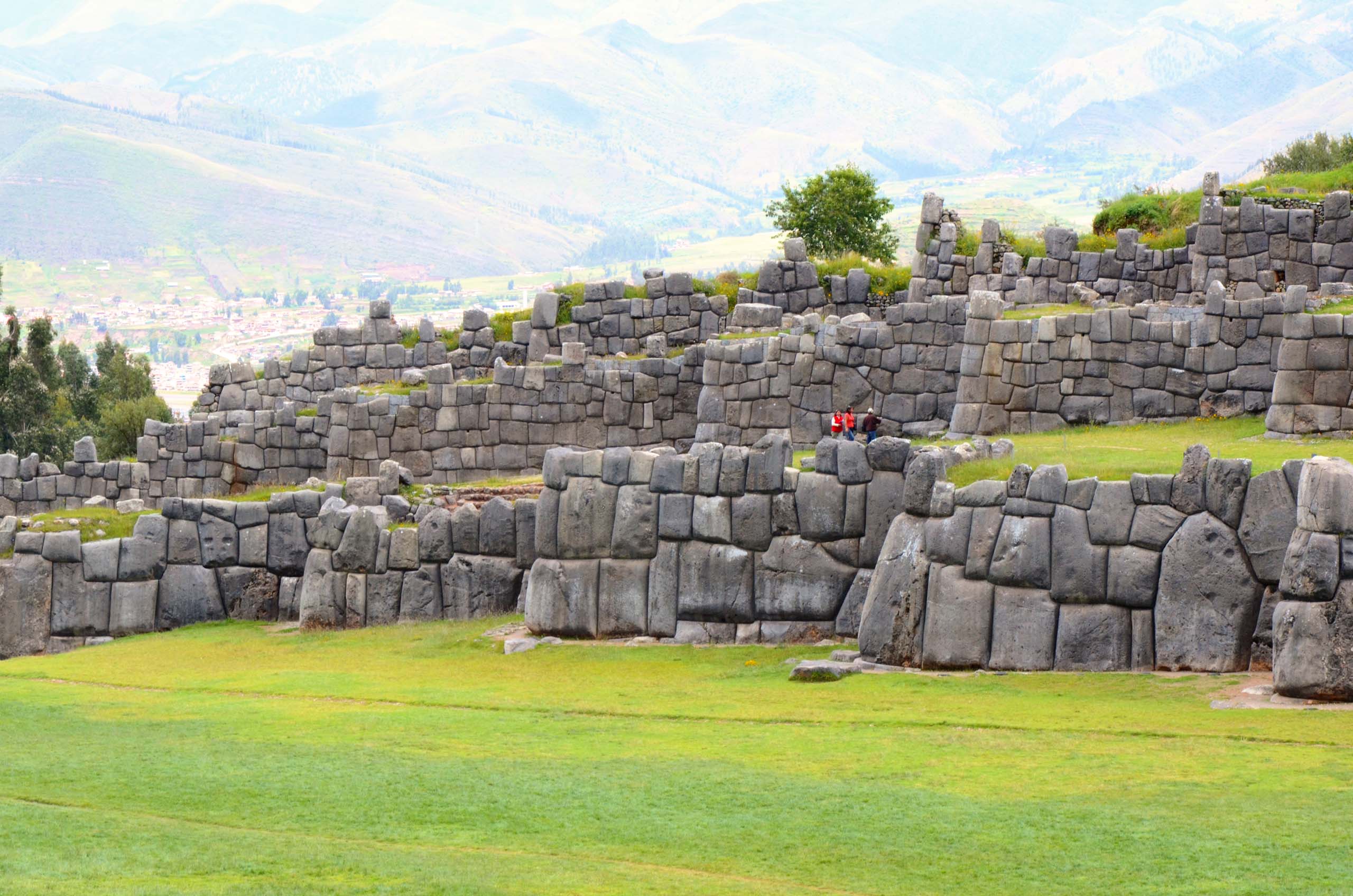
The complex itself has important architectural and natural parts, each with its own meanings and stories, such as:
They are named Muyuccmarca, Paucarmarca, and Sallaqmarca and are located at the top of the bastions (zigzag walls). In the times of the Incas, these were towers arranged in a straight line at the summit of the hill, where there was abundant water, and today, we can still see parts of the aqueducts.
Currently, only the foundations of the Towers remain. The buildings were destroyed in the early colonial period, their foundations covered with earth; they were later located and recovered by Dr. Luis E. Valcárcel.
This group of enclosures is found at the top of the hill, to the south and a short distance from the towers. They are beautiful rooms situated against the hill, overlooking the plazas of the city of the Incas. The rooms themselves are characterized as long and narrow, connected by a series of trapezoidal doors. Their walls are made up of irregular polygons with steep faces and well-polished edges.
These refer to the three platforms that form a serrated pattern of recesses and projections made of limestone block walls, impressive irregular polyhedrons assembled with perfect precision. The first Spaniards attributed their construction to demons; even today, it is said that extraterrestrials are the ones who made this work. These bastions are considered a marvel at a global level.
Located in the central and middle part of the bastions with trapezoidal shapes, they served as entrance to the tower area. The three mentioned doors are: T’iopunku, Ajawanapunku, Wiracochapunku.
Geologically, it is a natural formation of diorite, of volcanic origin, which emerged modulating its surface with curves and stripes in the form of slides.
Translated, these words correspond to "where the monkey climbs up." It is a succession of seats carved in diorite rock with a deep aesthetic sense, located on the eastern part of the hill, from which there is a panoramic view of the complex.
There are two, the smaller next to Warmi K’acchana is short in length and has become a distraction for visitors. The larger one is further north, below a large limestone rock. This passage is flooded and not accessible.
According to geologist Dr. Carlos Kalafatovich, these tunnels, called chinkanas, correspond to undercuts by the action of groundwater that circulated through the caves.
The enigma of the "Chinkanas"
There are many rumors about the origin of the chinkanas, the why and what for of these so-called "labyrinths". Some believe they are interconnected with the various Inca constructions, yet it remains a great mystery.
There are dozens of legends formerly told by inhabitants of Cusco, as well as stories written by chroniclers like Inca Garcilaso de la Vega, about the connection that Sacsayhuamán had with the Qoricancha, or the sudden appearances of the ancient inhabitants who lived in Cusco.
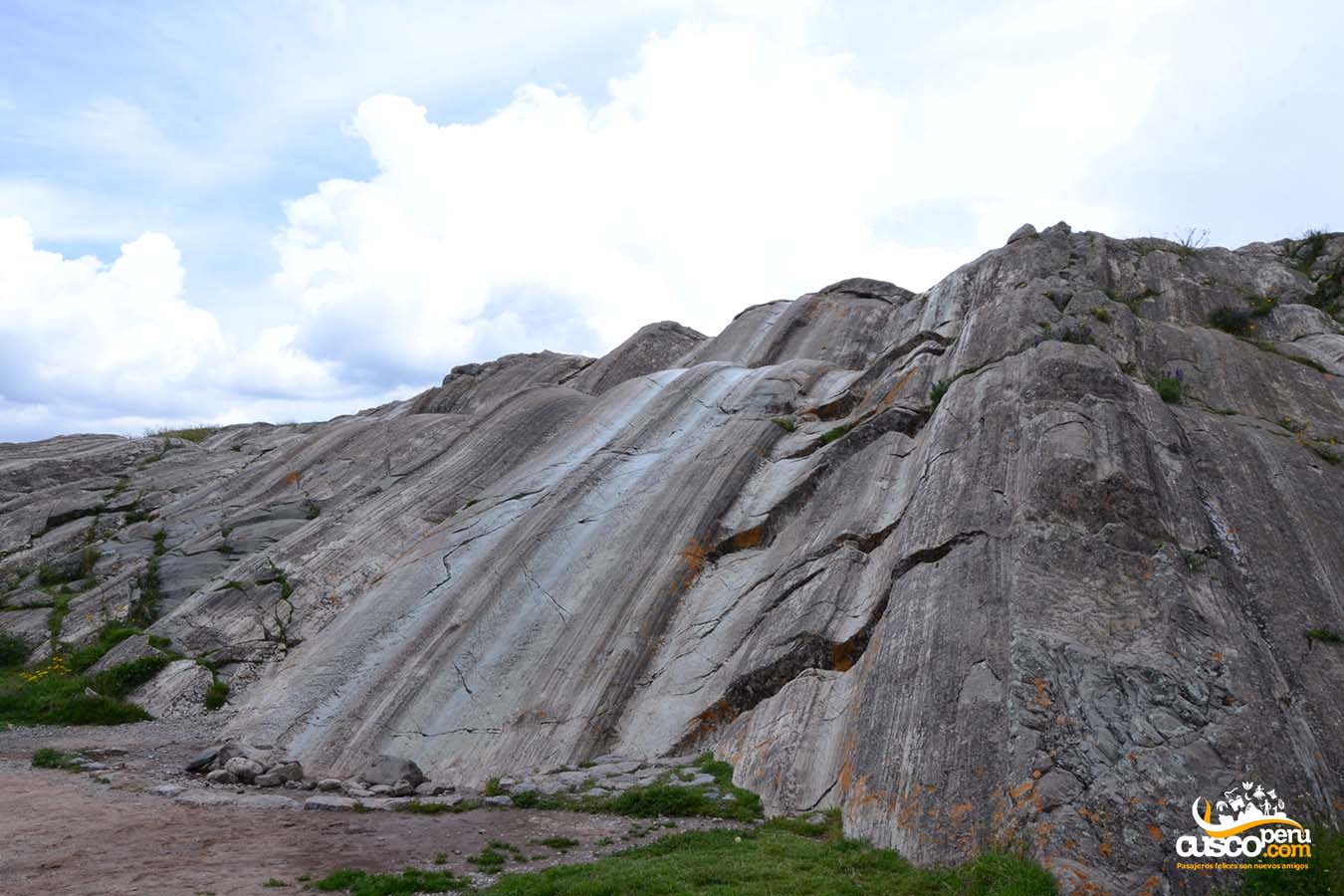
Currently, Inca reenactments take place on the esplanade of the Sacsayhuamán fortress
Every June 24th, the Inti Raymi is celebrated on the esplanade of Sacsayhuamán, which is a reenactment of the most important festival of the Inca era, the worship of the Sun God.
This is one of the most important festivities of the year, as tourists from all over the world gather to witness this wonderful spectacle.
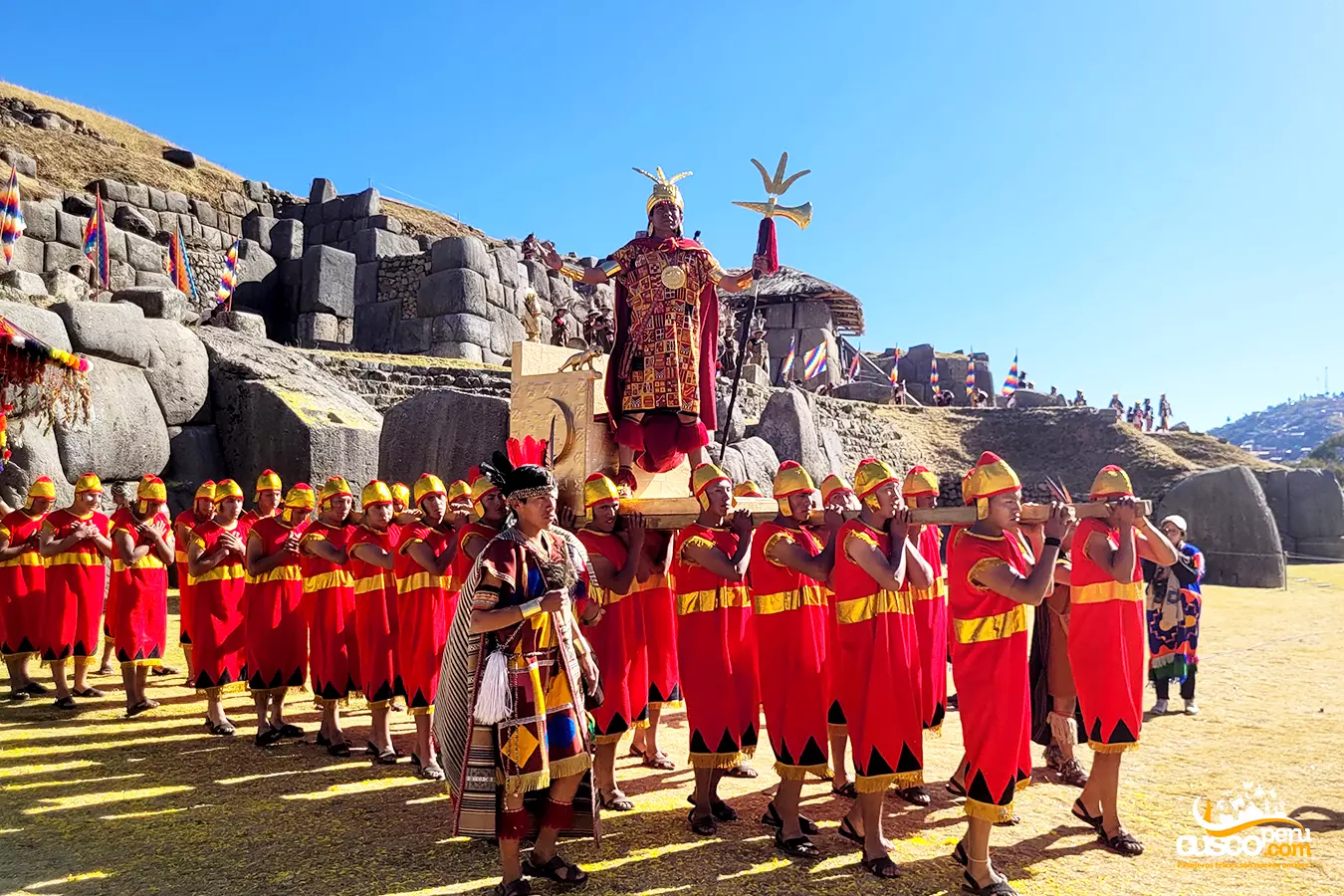
Monday to Sunday from 08:00 am to 05:30 pm.
The Sacsayhuamán entrance is included in the Tourist Ticket.
The climate in Sacsayhuamán corresponds to the climate found throughout the city of Cusco, completely unpredictable, although it is generally dry and temperate. However, being an esplanade, it is very common to feel strong winds from early on that only increase as the day goes on.
Getting to Sacsayhuaman is very simple, and offers different options:
Image Gallery
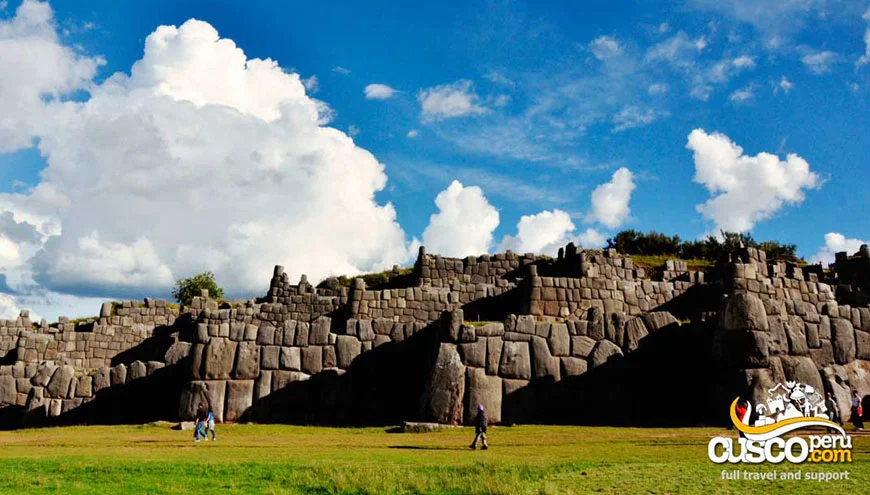
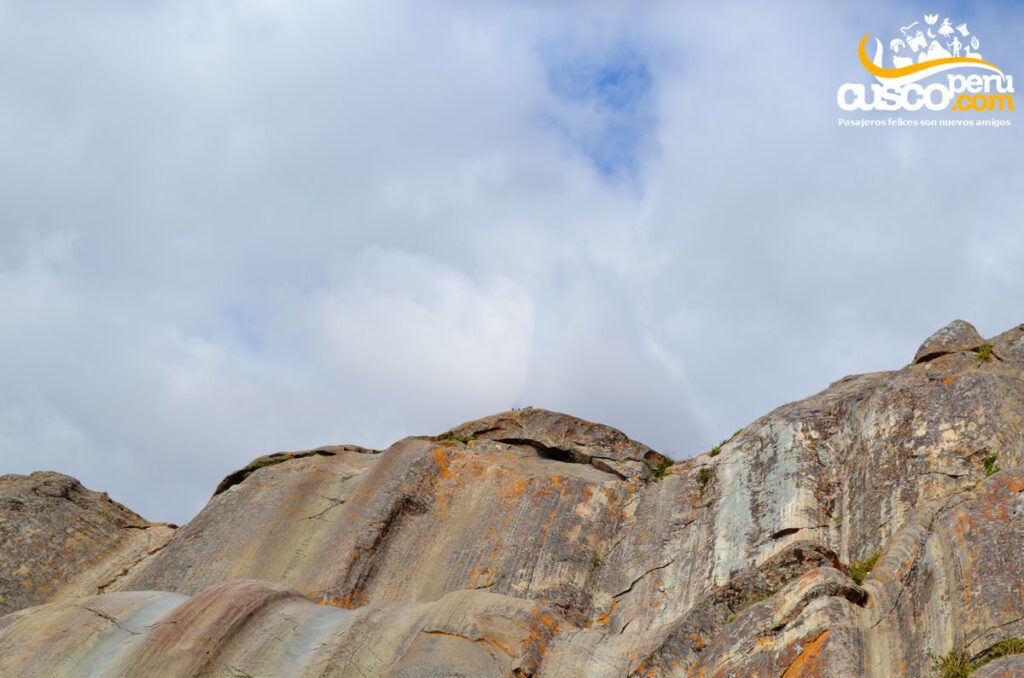
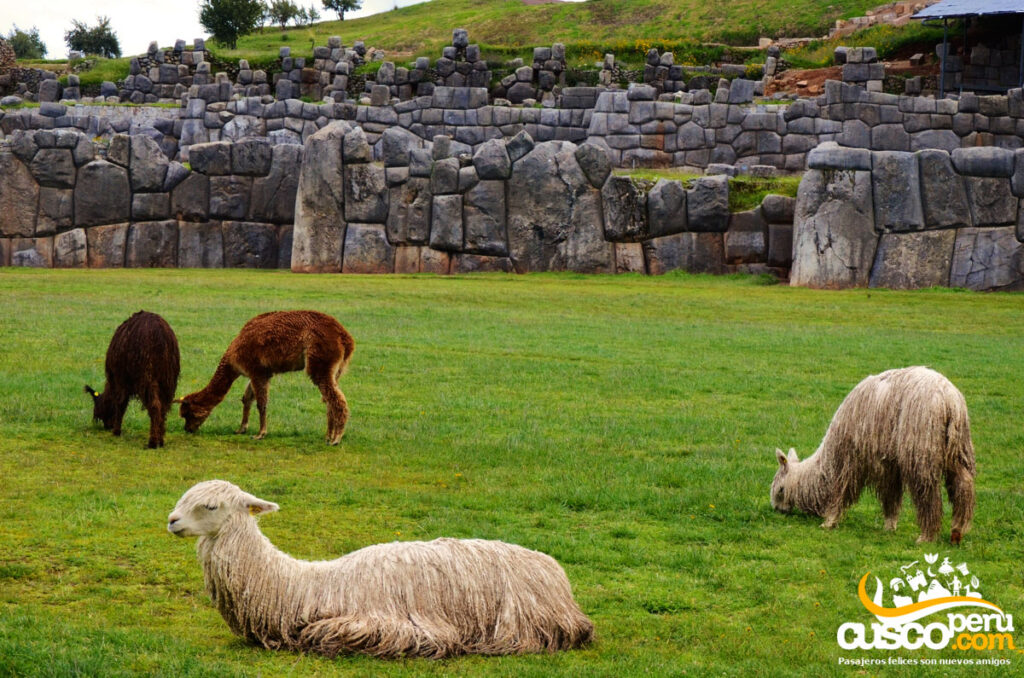
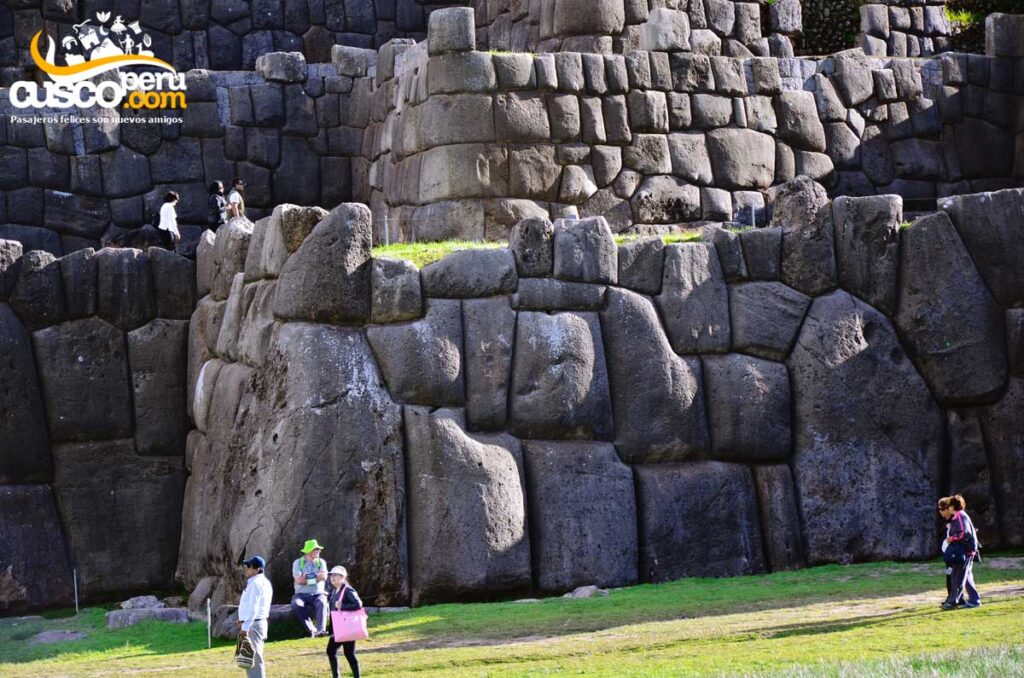
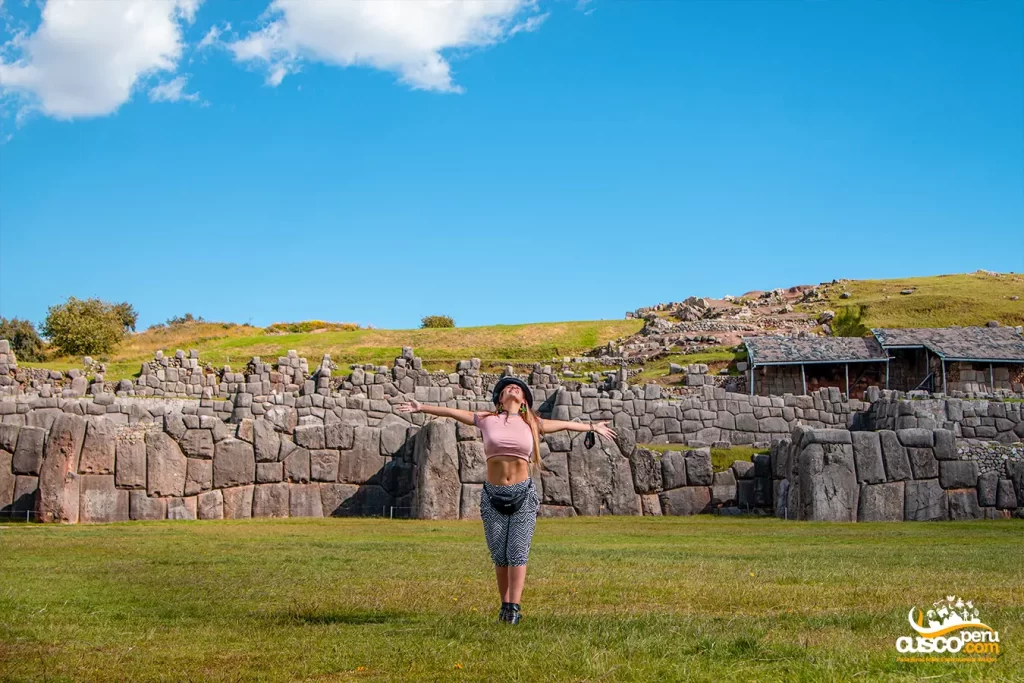
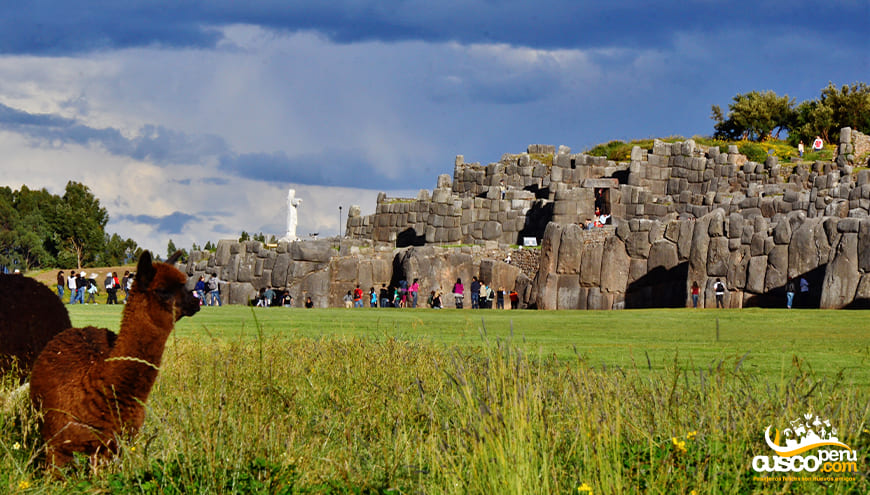


The Temple of the Sun - Qoricancha was originally named “Inticancha or Intiwasi,” which would mean House of the Sun, a religious enclosure built in 1200 AD under the order of Inca Wiracocha.
With the arrival of Inca Pachacútec to power, the entire city of Cusco underwent a beautification process. During this period, Inticancha was renamed Qoricanca, and enormous walls were built around it, adorned with gold, silver, and precious stones.
With the arrival of the Spanish invasion, the Temple of the Sun was looted and destroyed. According to some historians, the gold belonging to this site was transferred to Cajamarca to pay the ransom of Inca Atahualpa.
The temple became the property of Francisco Pizarro, who gave it to the Dominican order. They demolished what was left of the Qoricancha Temple to build the Church of Santo Domingo. The construction suffered three earthquakes (1650, 1749, and 1950), completely damaging the Church of Santo Domingo; only the Inca walls remain intact.
In 1956, the reconstruction of the Temple of the Sun - Qoricancha began, prioritizing the exhibition of the Inca walls.
According to many chroniclers, the first to build a temple in honor of the sun were the original inhabitants of Cusco, the “Ayamarcas,” initially calling it “Inticancha.” This ethnic group inhabited Cusco around the 13th century, before the expansion of the Inca Empire. They had a great rivalry with the Incas, but they were defeated and annexed to the Tahuantinsuyo during the reign of Inca Wiracocha.
Koricancha, Qoricancha, or Coricancha would be understood in Spanish as “Temple of Gold,” deriving from the Quechua words Quri “Gold” and Kancha “Temple.”
We can also say that “Qori” means worked gold, with its Spanish form being Cori. “Kancha” means enclosed site, limited by walls, with its Spanish form being Cancha.
Thus, we can say that the name means “Enclosed site containing gold.”
The Qoricancha Temple was a site dedicated to the worship of the Incas' main deity, the Sun. In addition to the Temple of the Sun, this place has four other small temple complexes dedicated to deities such as the Goddess Killa; the moon, the God Illapa; the lightning, the God K'uychi; the rainbow, and the Goddess Chack'a, the star.
All these complexes had a continuous strip of pure gold three meters from the ground that connected each sector. Similarly, the wire that held the thatched roofs of the enclosures was made of gold. The walls were built with perfectly interlocked natural stones, as seen in other Inca constructions.
Qoricancha is located in the city center, at the intersection of Av. El Sol and Santo Domingo Street, just two blocks from Cusco's Plaza de Armas.
The description made by Garcilaso harmonizes with what still stands today. Although it is only a pale reflection of what Qoricancha was in Inca times.
It was the Main Temple of all Qoricancha, occupying more than half the width of the current Church of Santo Domingo. Garcilaso recounts that within this temple were the embalmed bodies of the children of the Sun, placed in order of antiquity on chairs and golden tables. The walls were covered with gold plates, and there was a disk representing the figure of the Sun made of a thicker gold plate than the other plates covering the temple. The western end corresponds to the current drum overlooking Av. Sol; its eastern end reached the current atrium of the church.
This temple was closer to the Temple of the Sun, as the Moon was considered the Sun's wife. This building was lined with silver planks, and there was a representation of the Moon made of silver. Inside, the mummies of the Coyas were kept, placed in order of antiquity. Approximately half of the Temple was demolished by the Spanish to build the nave of the Church of Santo Domingo. It occupies part of the western side of the Qoricancha's inner courtyard.
It is located near the Temple of the Moon but separated by a beautiful alley, dedicated to Venus and the seven sisters and all other stars. The Incas called Venus “Chasca,” meaning star. In this temple, the Inca was placed, according to historians' references, to be deified or to witness festivals or sacrifices performed in the rectangular courtyard. It occupies part of the western side of the Qoricancha's inner courtyard.
Illapa or Chuki Illapa means lightning, thunderbolt, and thunder. The mentioned temple is in front of the temple of Venus, with three simple jamb doors, equidistant and slightly trapezoidal, and also has a window on each side wall.
In this temple, the Rainbow, believed to come from the Sun, was worshiped. It has identical architectural features as the Temple of Illapa. Part of this temple was demolished by the Spanish to build the buildings of the Dominican Convent. It is located north of the Temple of Illapa and in front of the Temple of the Moon, on the eastern side of the Qoricancha's inner courtyard.


Almost all towns in the world, in all eras, built large plazas in front of their temples. Inti Pampa (translated as Plain of the Sun) is where the nobles, their courts, service personnel, dancers, etc., would stay when the Inca and the nobility moved to Qoricancha during festivals. This site now corresponds to the Plaza of Santo Domingo, and its boundaries and extent have hardly changed. It is located north of what was Qoricancha.
It became the great repository of offerings brought from all the subjugated and confederated nations for the Sun God. The offerings consisted of representations of flora and fauna of Tahuantinsuyo. According to some historians, these offerings made of gold and silver were life-sized and filled the area impressively.
The Spanish called it The Solar Garden due to the number of terraces. In the colonial era, it became the orchard of the Dominican Friars. It is located on the western side of Qoricancha and can be seen in its entirety from Av. Sol.
There were five water fountains, and the origins of the water sources were a well-guarded secret. The fountains had religious significance and were decorated with precious metals. They were located throughout Qoricancha, and today we can see an octagonal fountain in the Qoricancha courtyard.
The Temple of the Sun is open Monday to Saturday from 09:00 a.m. to 5:00 p.m. and Sundays from 2:00 p.m. to 5:00 p.m.
GENERAL ADMISSION is S/.15.00 for foreign or national tourists. The entrance is not included in the Tourist Ticket.
*Please note that with your ticket, you can visit the Qoricancha temple without a time limit.


The archaeological complex of Q'enqo was an important Inca religious site, where ceremonies in honor of the major gods of the Inca culture were performed.
What remains today of the archaeological complex of Q'enqo are carved rocks that could not be destroyed by the Spaniards. Little remains of the paths and aqueducts, nor are the enclosures, the deposits, or the liturgical baths present.
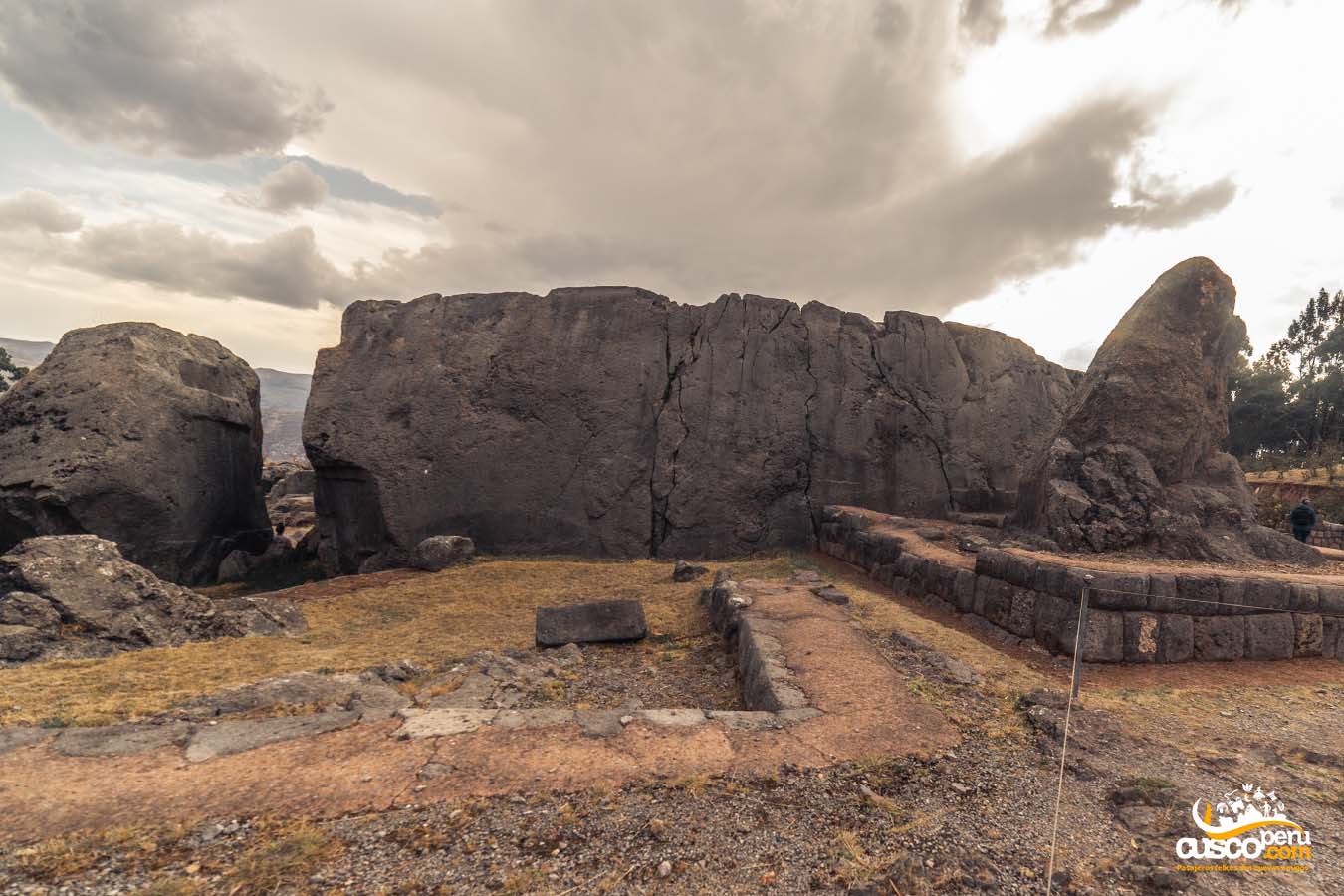
The translation of the word Q'enqo or Kenko would be "Labyrinth" alluding to the tunnels, passages, and underground channels that this place housed. It is believed that the Spaniards shaped the name of the place, calling it "Q'enqo" when traditionally in the Inca era it was known as "Q’inqu".
It is located on the outskirts of the city of Cusco, on the Socorro hill, at an altitude of 3580 meters, 5 km from the city center.
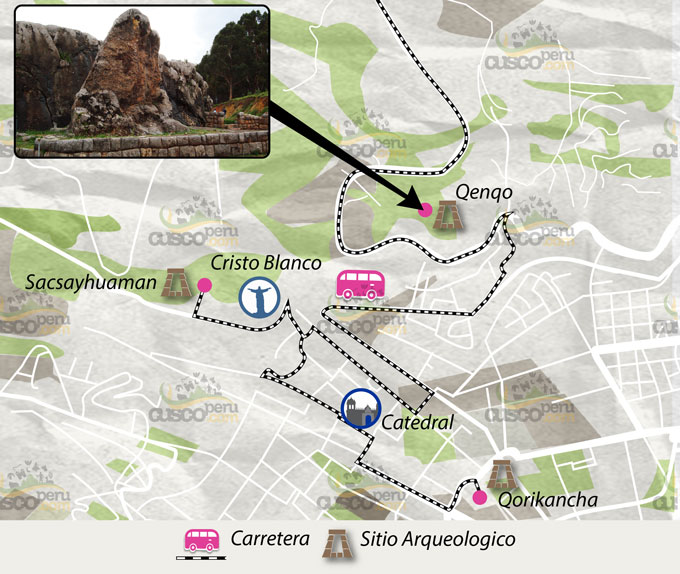
Q’enqo is entirely sculpted in a natural rock formation, the religious significance of this site led to its destruction by the Spanish colony; however, being completely made of stone, it managed to withstand the attacks.
Inside, carvings of three important animals in the Andean cosmovision are found: the condor, the puma, and the snake.
It is composed of two main areas known as Q’enqo Grande, which is the larger rock formation, and a smaller rock, called Q’enqo Chico.
The sites we describe were undoubtedly very significant sanctuaries for the Incas. Despite the destruction this complex suffered during the colonial period, what can currently be seen within it is still impressive and colossal.
It is located at the top of the large rock, consisting of two cylindrical stone prominences that rise vertically on an almost elliptical pedestal, all carved at the top of the same rock.
The use of the intiwatanas (which would mean "where the sun is tied") during the Inca period is still an enigma. It is assumed to have been a kind of astronomical observatory, used by the amautas to measure time, establish the seasons, determine solstices and equinoxes, and also served as a shrine where worship was given to the Sun, Moon, and stars.
With the arrival of the winter solstice, the first rays of the sun fall precisely on this spot, forming a figure that resembles a puma with shining eyes.
It is an underground chamber, with floor, ceiling, walls, tables, and cupboards carved out of a single giant rock. It is said that this underground chamber could have been used for embalming the corpses of Inca nobles, as a place for human and llama sacrifices.
Being underground, it symbolized the entrance to the world of the dead.
Located on the large rock and very close to the Intiwatana. The zigzagging channel starts from a small hole and moves downward in an inclined plane and broken line, which then bifurcates, one of these branches led the liquid to the underground chamber or Sacrifice Room (according to the Cusco historian Víctor Angles). The liquid could have been consecrated chicha or the blood of beings sacrificed to the gods.
It is a huge semicircular area 55 m. long, with 19 incomplete niches distributed along the wall. During the Incanato, this place was a temple for public ceremonies. In front of the open area, there is a large 6 m. high stone block resting on a solid rectangular pedestal.
There are niches distributed around the amphitheater as seats, but according to recent research, it is very likely that they were actually the bases of a large wall, located in each of them, the representation of an entity to which worship was given.
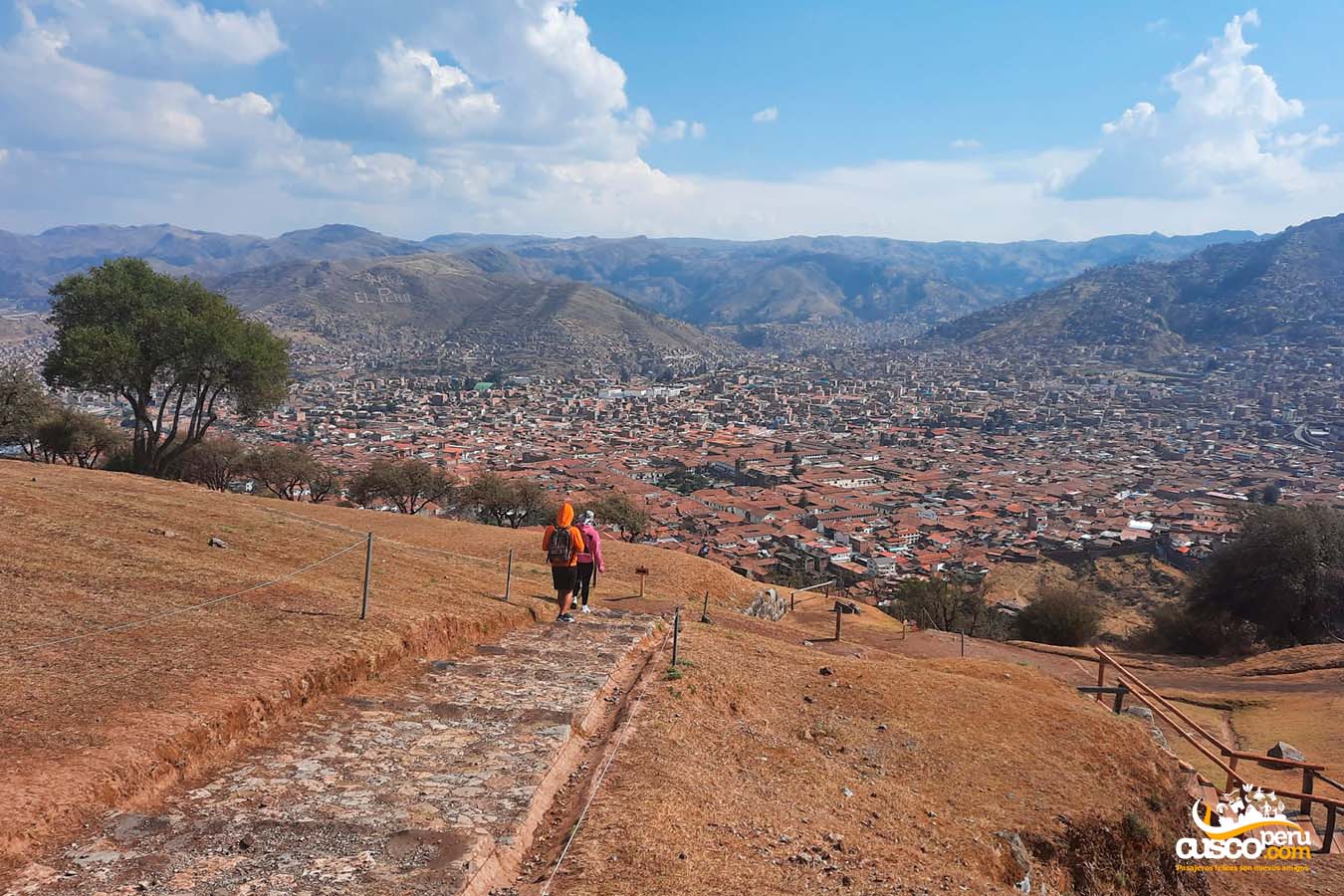
The forest of Q’enqo is a must-see for photography enthusiasts and if you want to have a memory of your visit. Admission is completely free and it is located a few meters from the archaeological site.
The forest is made up of imposing eucalyptus trees that will leave you amazed. It is a unique and incredible place, which is why it was declared a World Heritage Site by UNESCO.
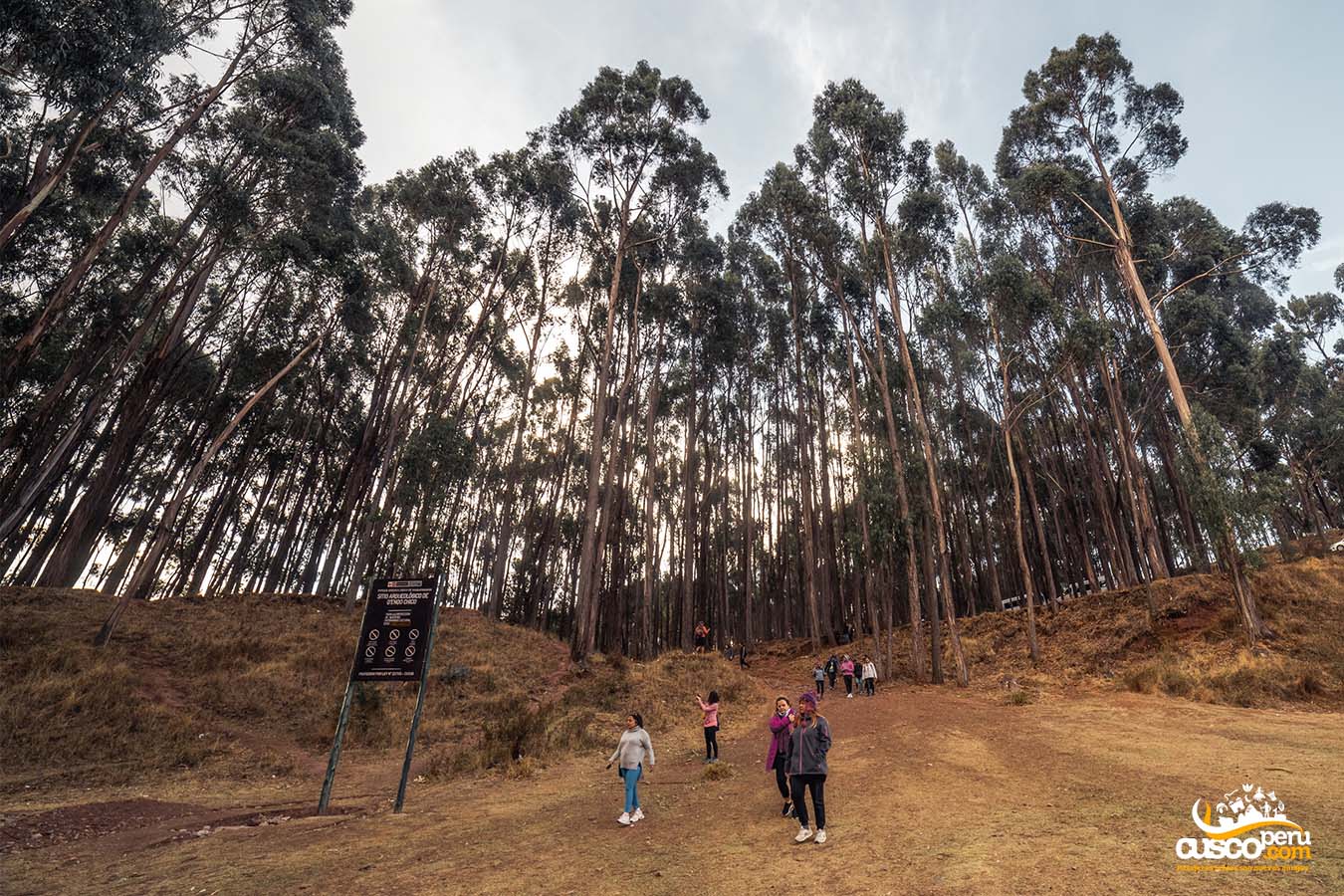
Monday to Sunday from 08:00 am to 05:30 pm.
The entrance fee is included in the Tourist Ticket.
Being located a few kilometers from the city of Cusco, Q’enqo can be reached in various ways:
Image Gallery
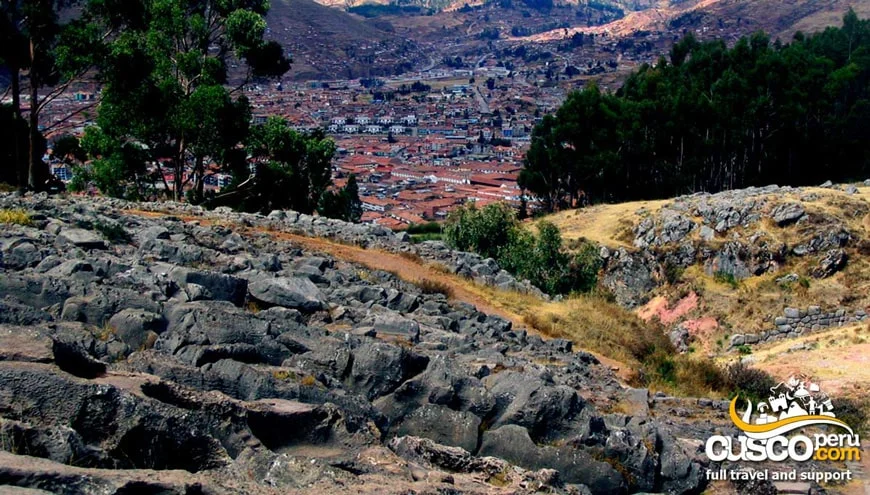
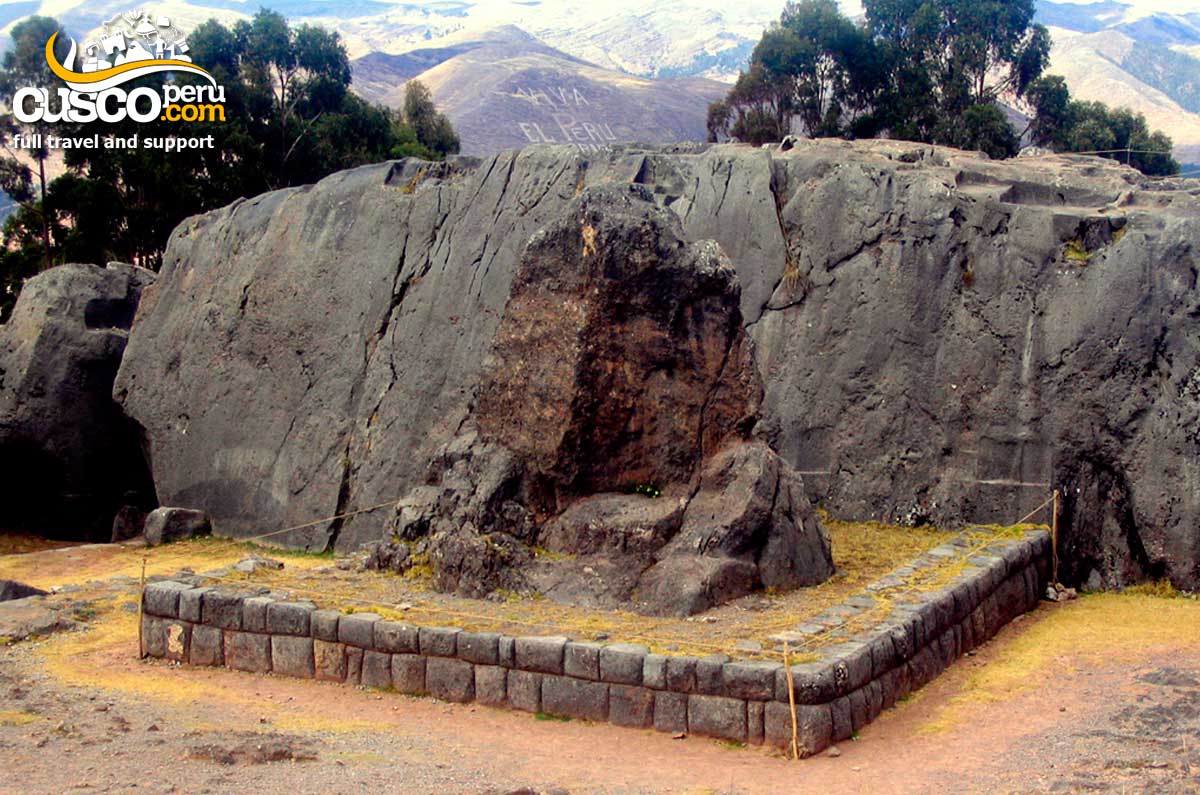
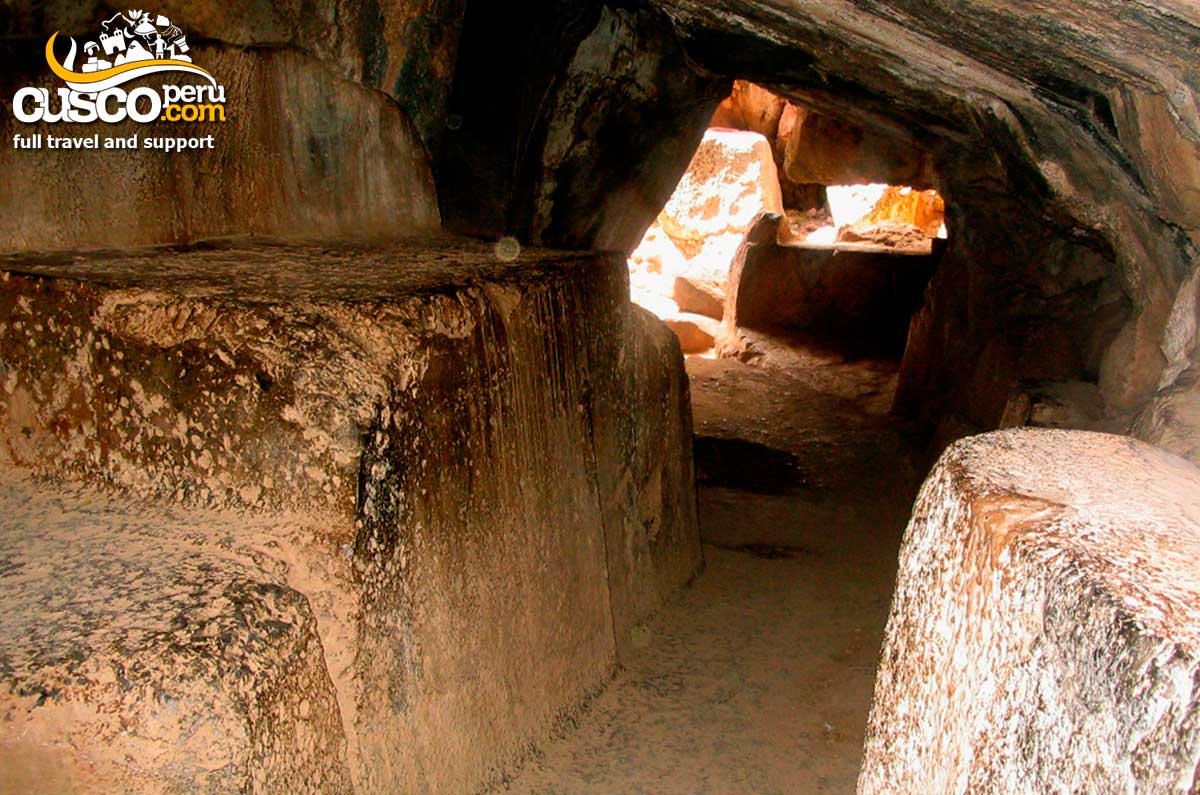
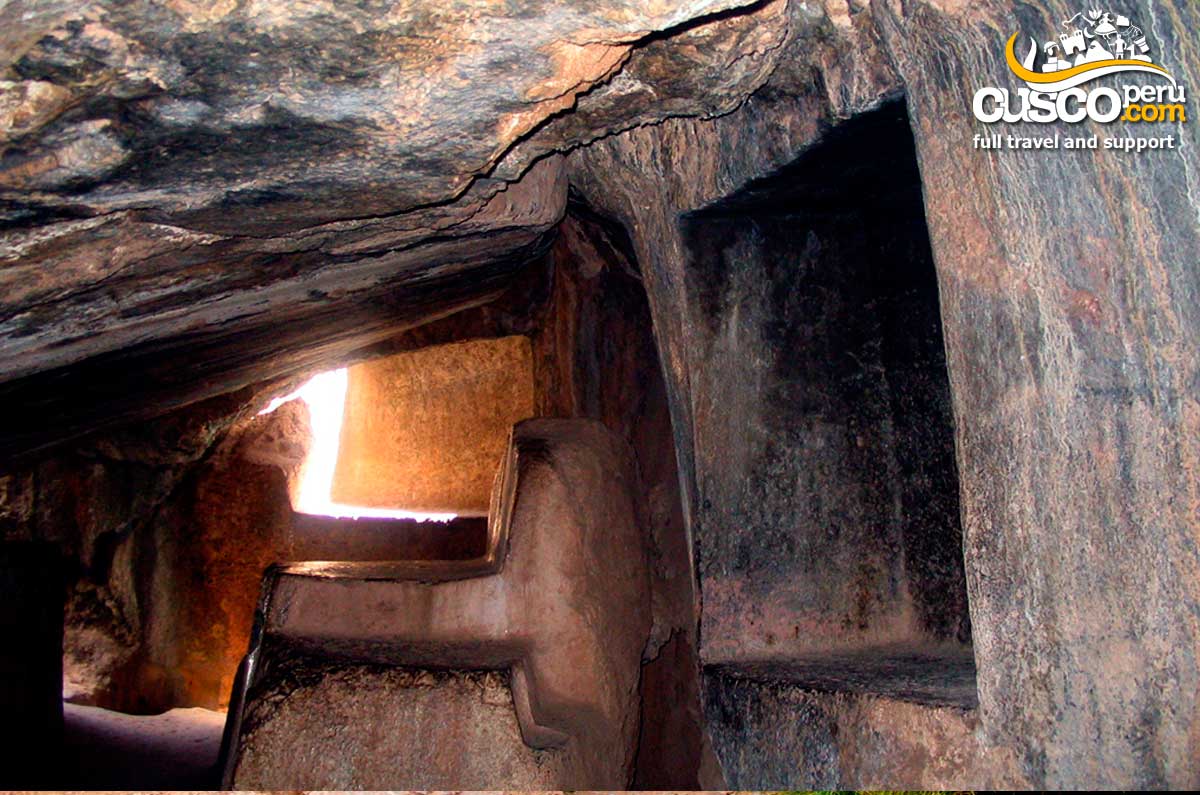
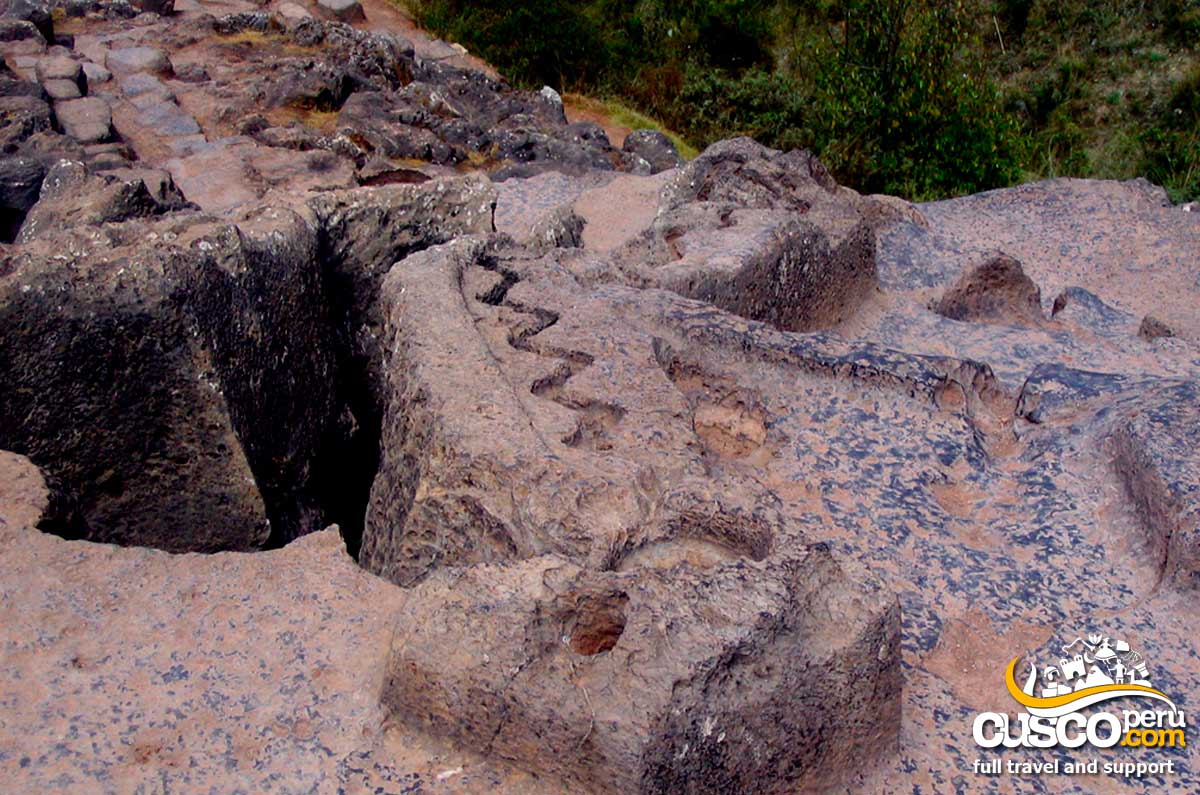
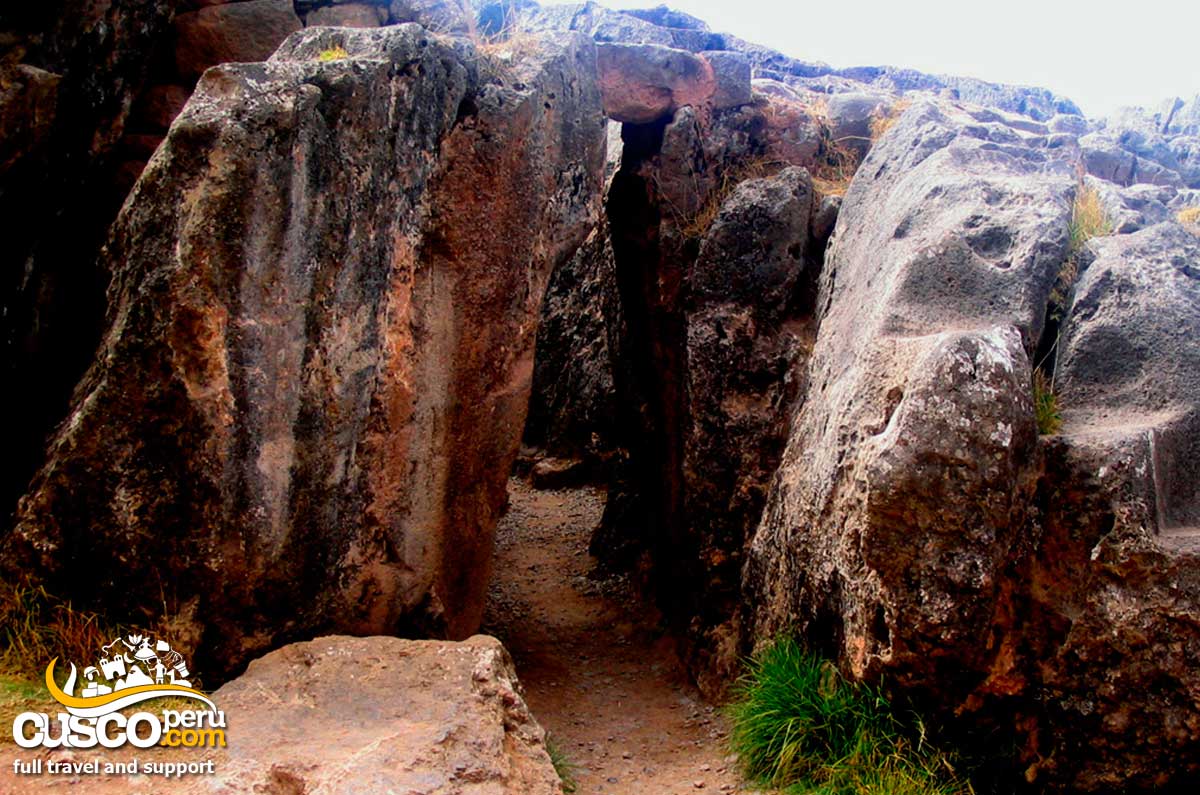
Puca Pucara is one of the most important archaeological complexes in Cusco, alongside Sacsayhuaman, Q'enqo, and Tambomachay.
Its architecture demonstrates the advanced Inca technology, although the lack of perfect finishes suggests that this site was not of significant religious importance. However, it was of great importance for the Inca messengers and the royal guard.
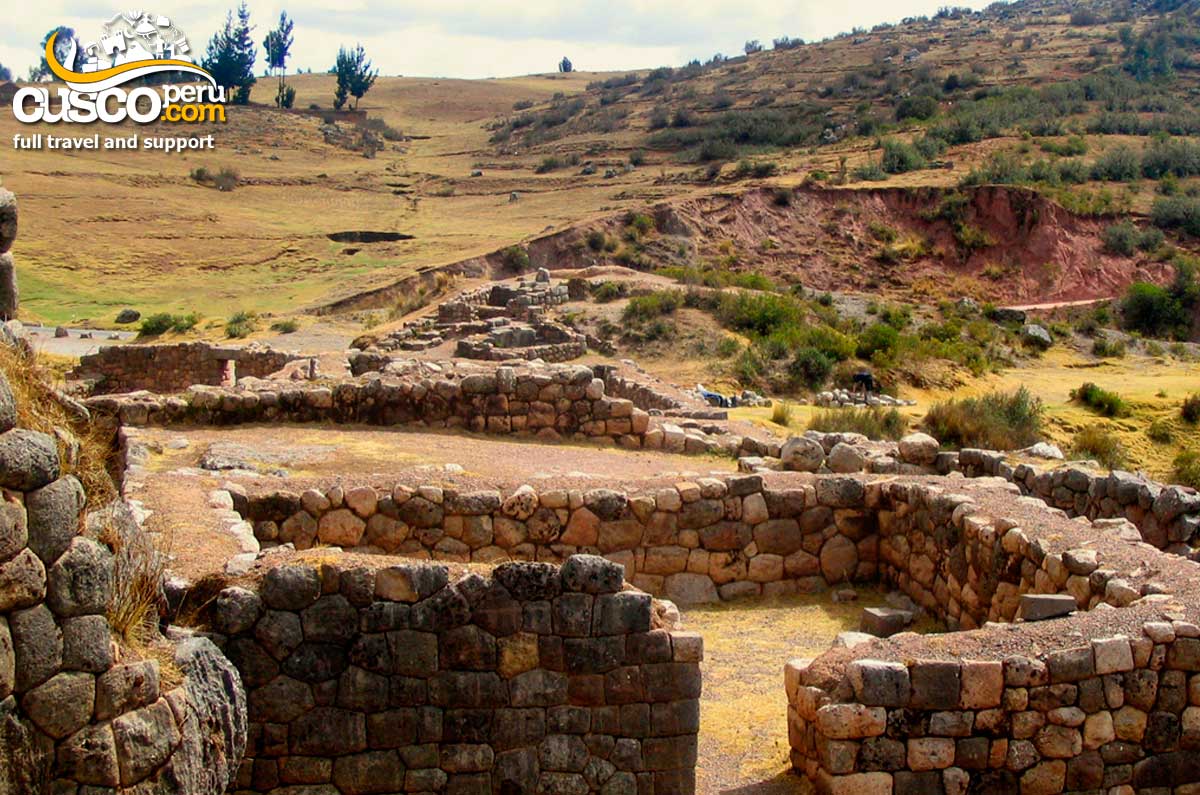
Its construction was initiated by a culture prior to the Incas; however, it was under Pachacútec's reign that the infrastructure was improved.
Traditional information indicates that when the Inca was set to visit the Baths of Tambomachay, the formidable entourage of soldiers stayed in Puca Pucara, which served as a barracks and tambo. It is said that the chincana (underground tunnel) existing at the site directly connected to Tambomachay, although this is unproven.
The name Puca Pucara comes from two Quechua words meaning "Puca or Puka" red and "Pucara" which is fortress. Its translation would be Red Fortress, receiving this name due to the reddish hue its walls acquire in the evening.
The Archaeological Center of Puca Pucara is located on the upper part of the road leading to Pisac, about 7 km from the city of Cusco.
To get there, you can take a City Tour from any travel agency. Additionally, you can reach it by foot after visiting Tambomachay, as it is just a few meters away from the Inca baths.
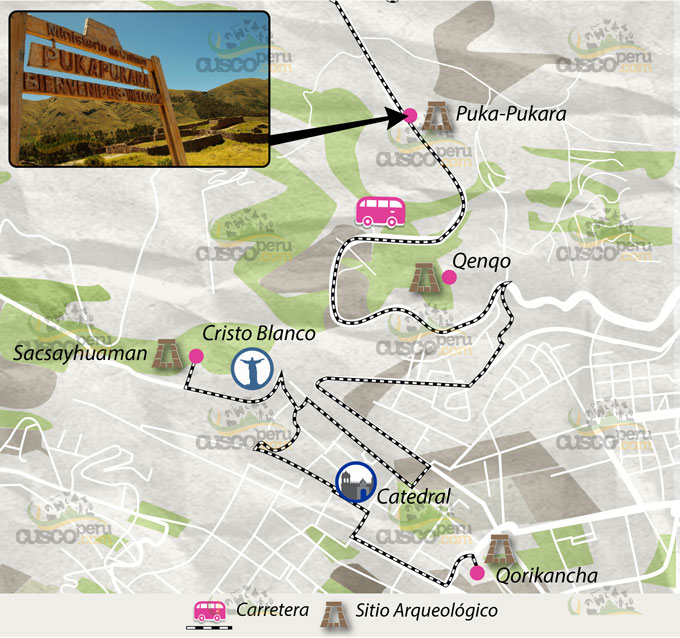
This archaeological complex features terraces, walls, aqueducts, squares, and stairways that ensure the urban layout is suitable and functional. The buildings are made of stones of various sizes, with the surface of the rocks being very rugged and scarcely worked, compared to other archaeological sites.
The structure was built using limestone native to the area, mostly medium and small stones, all joined with great precision, making it resistant to various seismic movements.
The complex includes three walls with irregular floors, built across three levels on the same site.
Located at the lower part of the archaeological complex, this first wall has a sinuous layout carefully avoiding cutting through protruding rocks. To the north and behind the outer wall, there are six rooms of different sizes, built irregularly to avoid touching the rocks forming the wall.
The second wall encircles the central elevation. Between this and the first one, there are very broad platforms. On the second level, we find terracing and gardens facing south, and to the east, there are three rooms with trapezoidal plants and one rectangular.
This level is situated at the highest point. Currently, no Inca remains can be observed due to the passage of time; however, it offers an incredible view of the entire place.
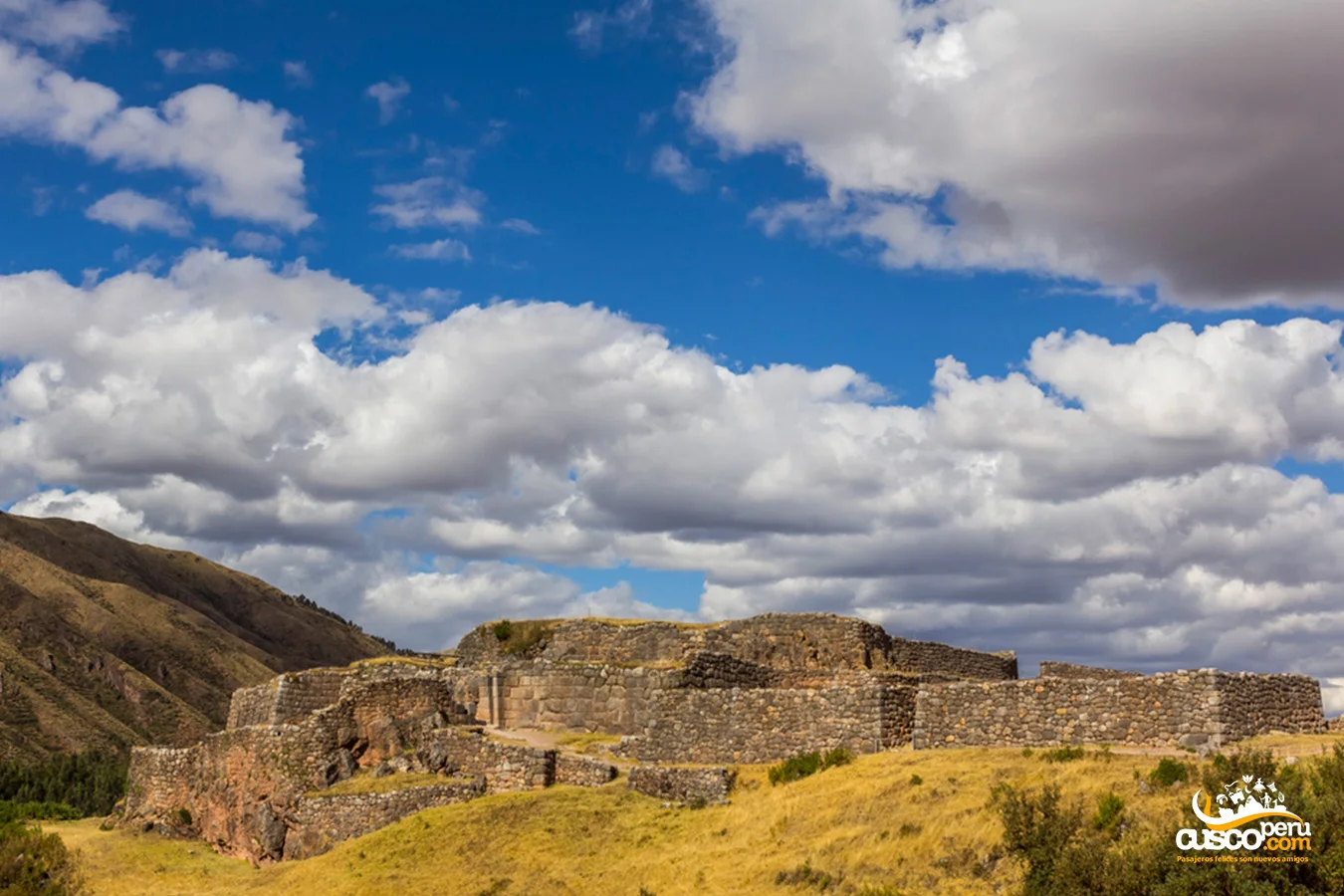
Monday to Sunday from 08:00 am to 05:30 pm.
Entrance to Puca Pucara is included in the Tourist Ticket.
The climate at Puca Pucara matches that of the city of Cusco, generally being dry and temperate. However, it is recommended to visit this site in the afternoon when the temperature is not so high, and you can appreciate why the place is named as it is.
Reaching Puca Pucara is very simple, and it offers different options:
Image Gallery
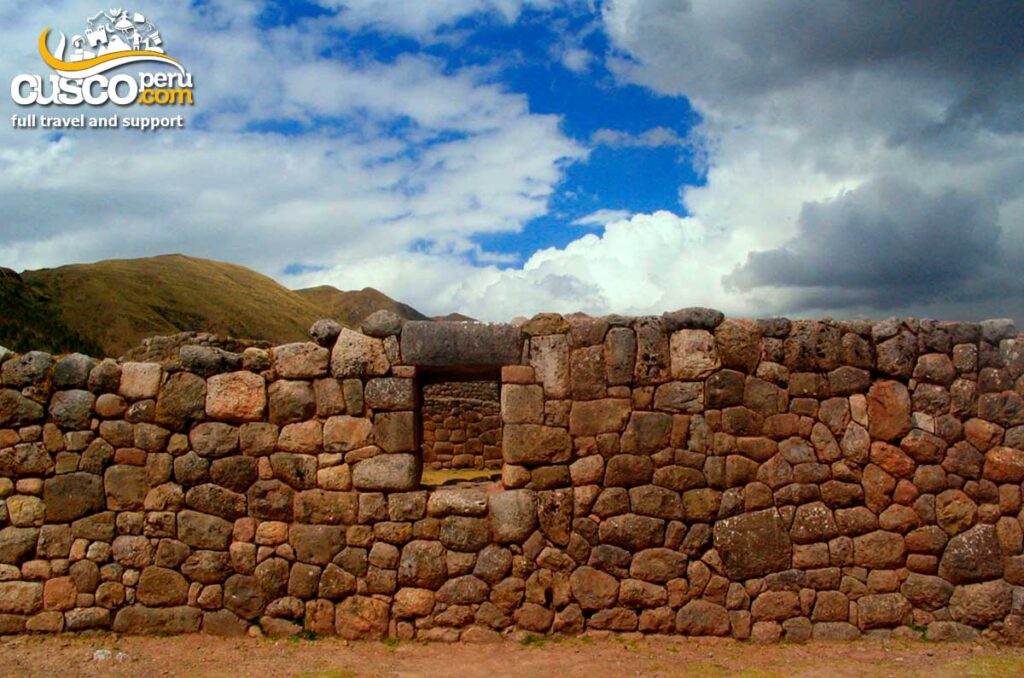
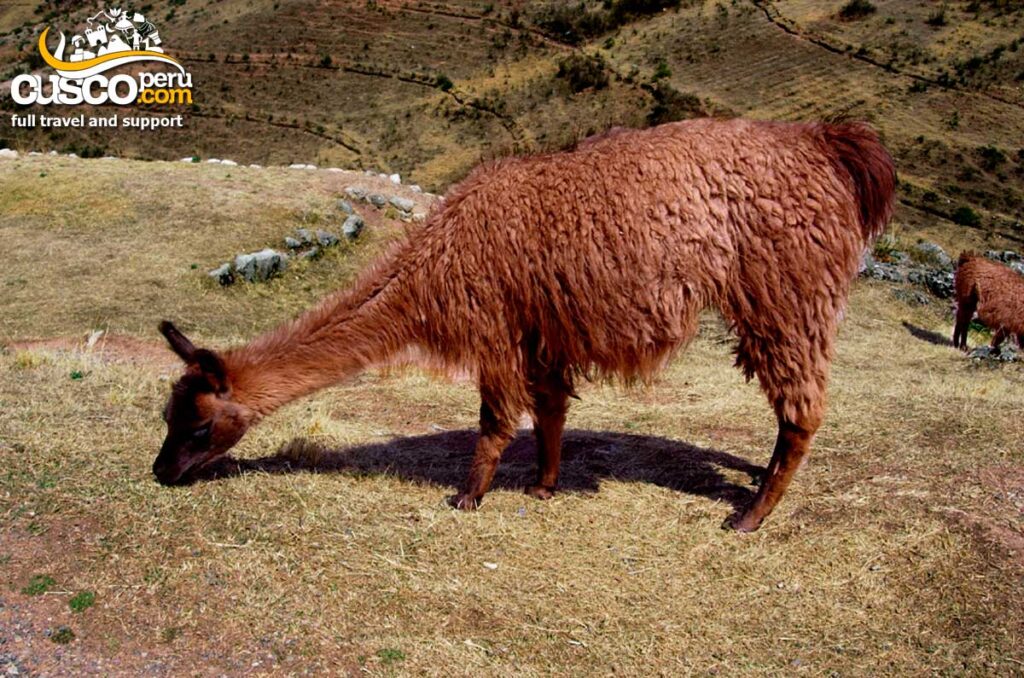
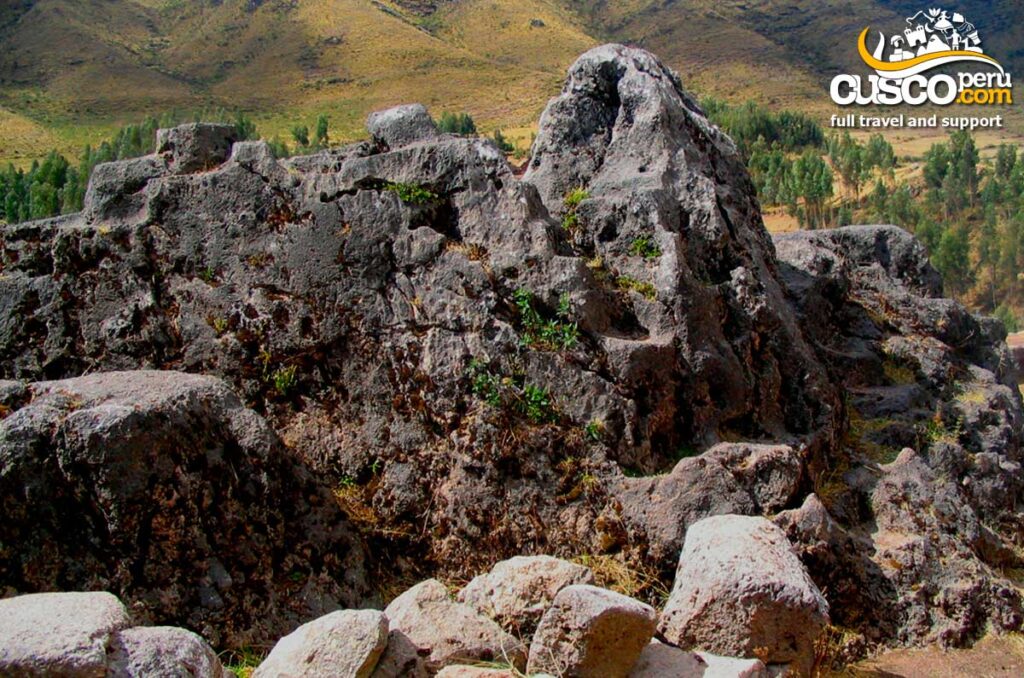

Happy passengers